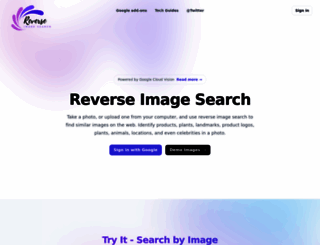Search by Image - Reverse Photos App
Page Load Speed
508 ms in total
First Response
26 ms
Resources Loaded
412 ms
Page Rendered
70 ms

About Website
Welcome to reverse.photos homepage info - get ready to check Reverse best content for United States right away, or after learning these important things about reverse.photos
Visit reverse.photosKey Findings
We analyzed Reverse.photos page load time and found that the first response time was 26 ms and then it took 482 ms to load all DOM resources and completely render a web page. This is quite a good result, as only 10% of websites can load faster.